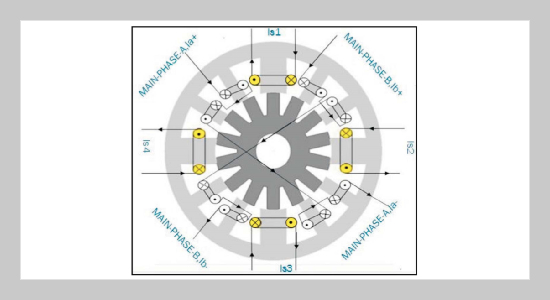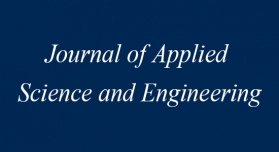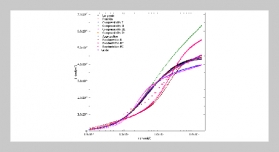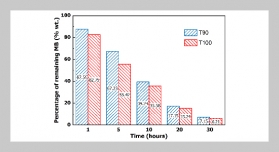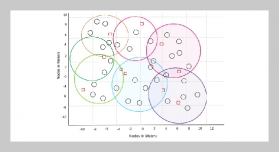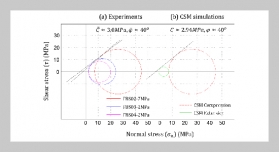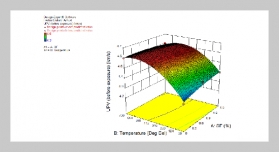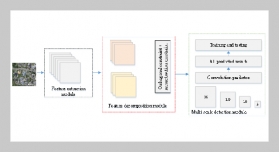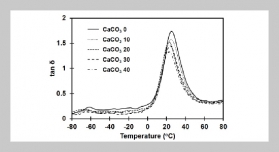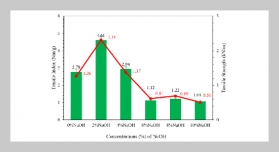REFERENCES
- [1] Krishnan, R., Arumugan, R. and Lindsay, J. F., “Design Procedure for Switched-reluctance Motors,” IEEE Transactions on Industrial Applications, Vol. 24, pp. 456–461 (1988). doi: 10.1109/28.2896
- [2] Miller, T. J. E., Switched Reluctance Motors and Their Control, Magna Physics Publishing and Clarendon Press, UK, Oxford (1993).
- [3] Ohyama,K., Naguib, M.,Nashed, F., Aso, K., Fujii, H. and Uehara, H., “Design Using Finite Element Analysis of a Switched Reluctance Motor for Electric Vehicle,” Journal of Power Electronics, Vol. 6, No. 2, pp. 163�171 (2006).
- [4] Ayari, S., Besbes, M., Lecrivain, M. and Gabsi, M., “Effectes of the Air Gap Eccentricity on the SRM Vibrations,” Proceedings of International Conference on Electric Machines and Drives, pp. 138�140 (1999). doi: 10.1109/IEMDC.1999.769052
- [5] Bosch, R., “Development of a Bearingless Electric Motor,” Proceedings of International Conference on Electric Machines, ICEM-88, Pisa, Italy, pp. 373�375 (1988).
- [6] Bichsel, J., “The Bearingless Electrical Machine,” Proceedings of 4th International Symposium on Magnetic Suspension Technology, NASA/CP-1998-207654, pp. 49�63 (1998).
- [7] Takemoto, M., Chiba, A., Akagi, H. and Fukao, T., “Suspending Force and Torque of a Bearingless Switched Reluctance Motor Operating in a Region of Magnetic Saturation,”Conference Record of IEEE-IAS Annual Meeting, pp. 35–42 (2002).
- [8] Takemoto, M., Shimada, K. and Chiba, A., “A Design and Characteristics of Switched Reluctance Type Bearingless Motors,” 4th International Symposium on Magnetic Suspension Technology, NASA/CP-1998-207654, pp. 49�63 (1998).
- [9] Takemoto, M., Chiba, A. and Fukao, T., “ANew Control Method of Bearingless Switched Reluctance Motors Using Square-wave Currents,” Proceedings of the 2000 IEEE Power Engineering Society Winter Meeting, Singapore, CD-ROM, pp. 375�380 (2000). doi: 10.1109/PESW.2000.849993
- [10] Takemoto, M., Chiba, A. and Fukao, T., “A Feed-forward Compensator for Vibration Reduction Considering Magnetic Attraction Force in Bearingless Switched Reluctance Motors,” Proceedings of the International Symposium on Magnetic Bearings, ETH Zurich, pp. 395�400 (2000).
- [11] Takemoto, M., Suzuki, H. and Chiba, A., “Improved Analysis of a Bearingless Switched Reluctance Motor,” IEEE Transactions on Industrial Applications, Vol. 37, No. 1, pp. 26�34 (2001). doi: 10.1109/28. 903123
- [12] Takemoto, M., Chiba, A. and Fukao, T., “AMethod of Determining Advanced Angle of Square-wave Currents in a Bearingless Switched Motor,” IEEE Transactions on Industrial Applications, Vol. 37, No. 6, pp. 1702�1709 (2001). doi: 10.1109/28.968181
- [13] Takemoto, M., Chiba, A. and Suzuki, H., “Radial Force and Torque of a Bearingless Switched Reluctance Motor Operating in a Region of Magnetic Saturation,” IEEE Transactions on Industrial Applications, Vol. 40, No. 1, pp. 103�112 (2004). doi: 10.1109/TIA.2003. 821816
- [14] Chen, L. and Hofman, W., “Analytically Computing Winding Currents to Generate Torque and Levitation Force of a New Bearingless Switched Reluctance Motor,”Proceedings of the 12th International Power Electronics and Motion Control Conference, Portoroz Slovenia, pp.1058�1063(2006).doi:10.1109/EPEPEMC. 2006.4778541
- [15] Wang, H. J., Lee, D. H. and Ahn, J. W., “Novel Bearingless Switched Reluctance Motor with Hybrid Stator Poles: Concept, Analysis, Design and Experimental Verification,” The Eleventh International Conference on Electrical Machines and Systems, pp. 3358�3363 (2008).
- [16] Lee, D. H. and Ahn, J. W., “Design and Analysis of Hybrid Stator Bearingless SRM,” Journal of Electrical Engineering & Technology, Vol. 6, No. 1, pp. 94� 103 (2011). doi: 10.5370/JEET.2011.6.1.094
- [17] Lee, D. H., Lee, Z. G., Liang, J. N., and Ahn, J. W., “Single-phase SRM Drive with Torque Ripple Reduction and Power FactorCorrection,” IEEETransactions on Industrial Applications, Vol. 43, No. 6, pp. 1578– 1587 (2007). doi: 10.1109/TIA.2007.908162
- [18] Wang, H. J., Design and Control of a Novel Bearingless Switched Reluctance Motor, Ph. D. Dissertation, Industrial System Engineering of the Kyungsung University, Busan, Korea, June (2009).
- [19] Xu, Z. Y., Lee, D. H. and Ahn, J. W., “Control Characteristics of 8/10 and 12/14 Bearingless Switched Reluctance Motor,” The 2014 International Power Electronics Conference. doi: 10.1109/IPEC.2014.6869708
- [20] Torkaman, H., Moradi, R. and Hajihosseinlu, A., “A Comprehensive Power Loss Evaluation for Switched Reluctance Motor in Presence of Rotor Asymmetry Rotation: Theory, Numerical Analysis and Experiments,” Proceedings of Energy Conversion and Management, Vol. 77, pp. 773�783 (2014). doi: 10.1016/ j.enconman.2013.10.021
- [21] Hwu, K. I., “Applying POWERSYS and SIMULINK to Modeling Switched Reluctance Motor,” Tamkang Journal of Science and Engineering, Vol. 12, No. 4, pp. 429�438 (2009). doi: 10.6180/jase.2009.12.4.07
- [22] Wang, X. L., Ge, B. M., Wang, J. and Ferreira, Fernando J. T. E., “Radial Force Analytic Modeling for a Novel Bearing Less Switched Reluctance Motor When Considering Rotor Eccentricity,” Taylor & Francis, ISSN: 1532-5008, Vol. 42, No. 6, pp. 544�553 (2014). doi: 10.1080/15325008.2014.880968
